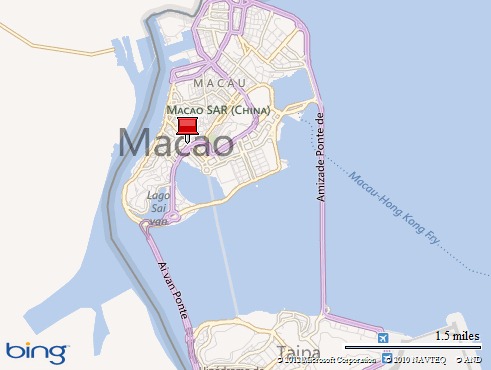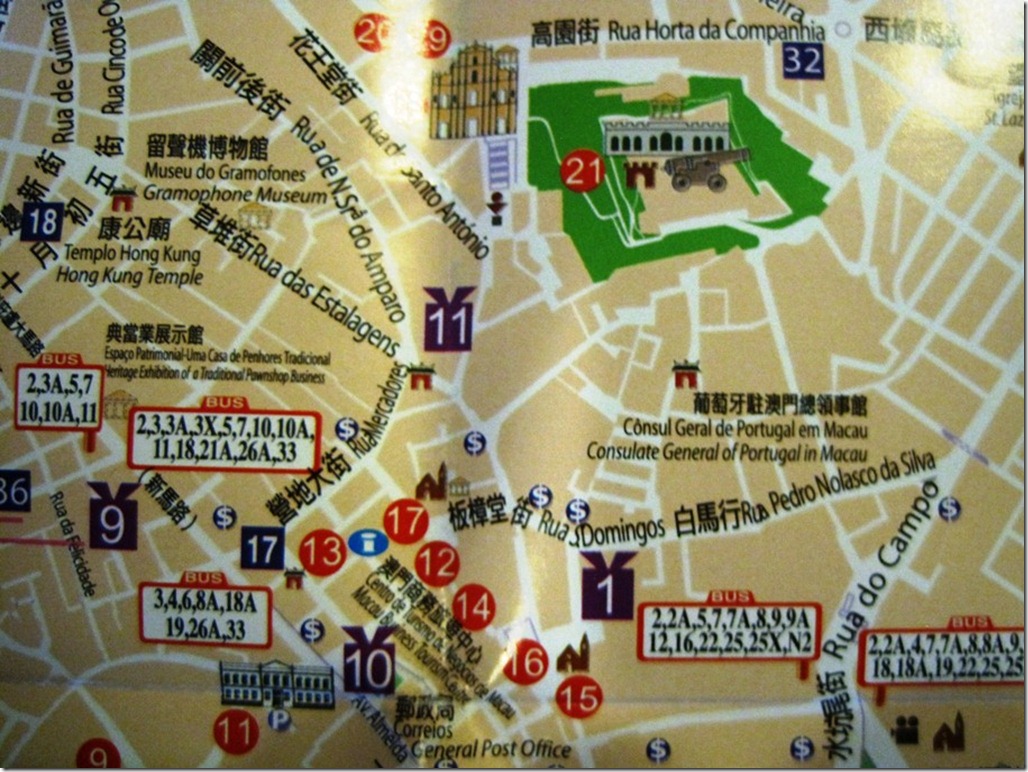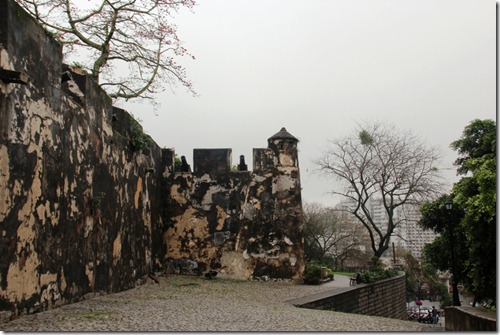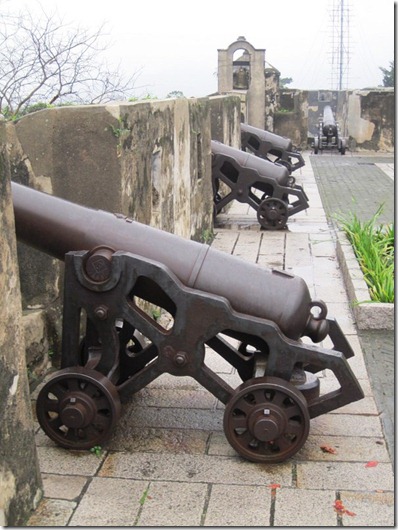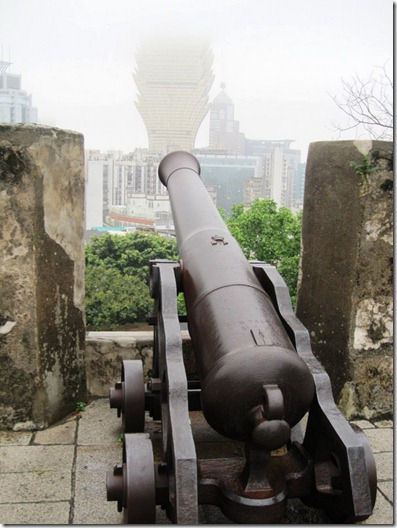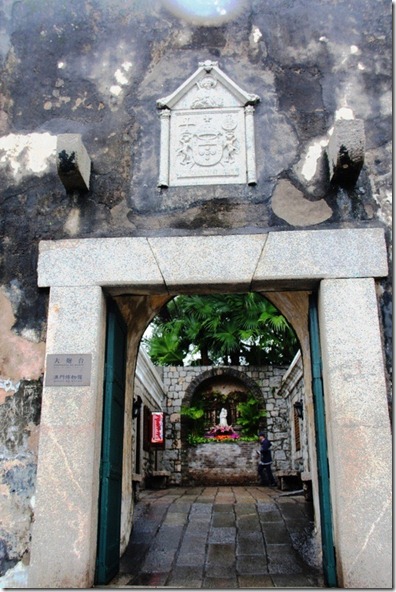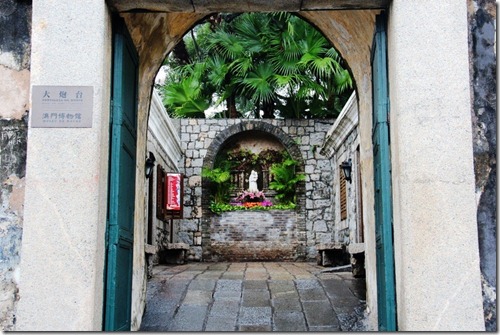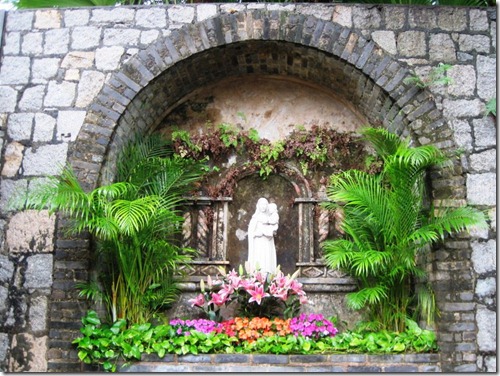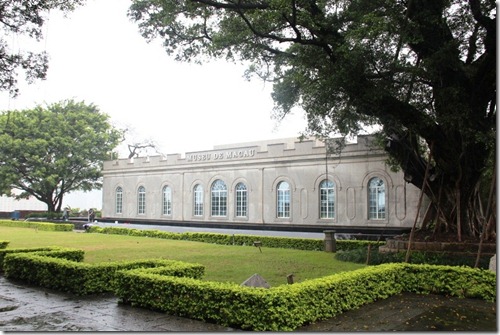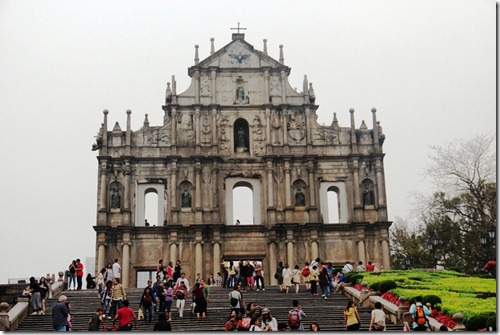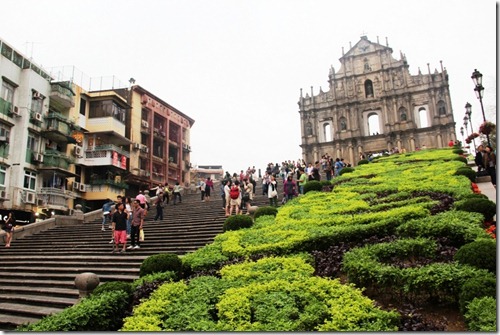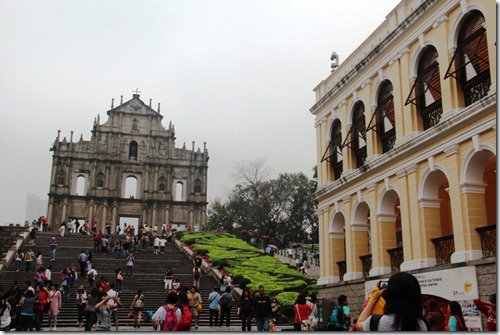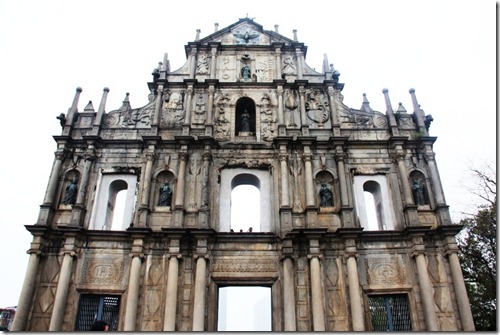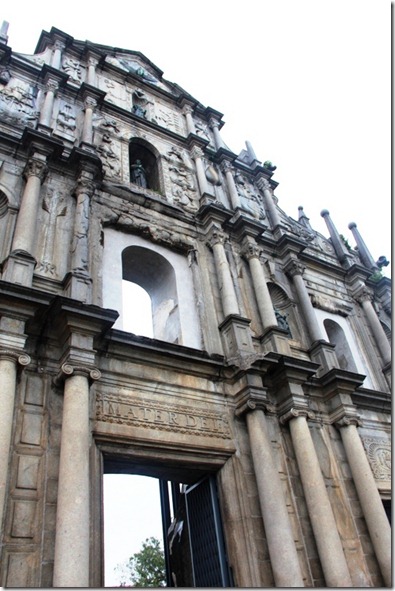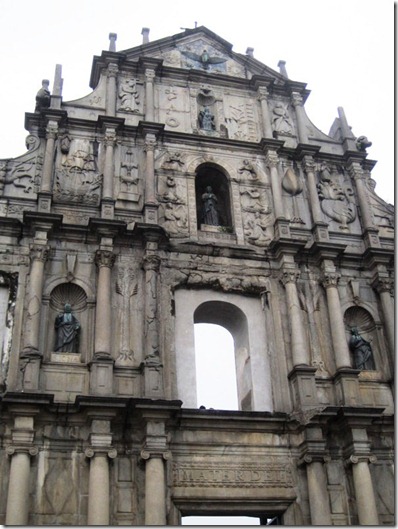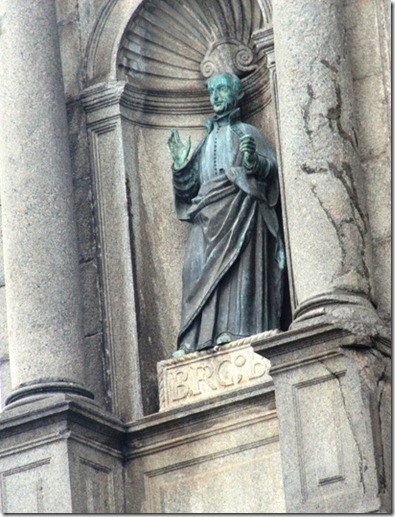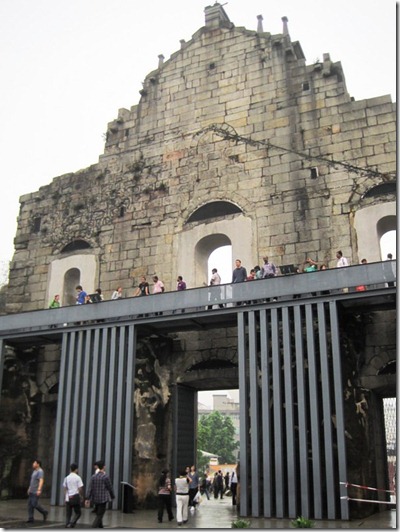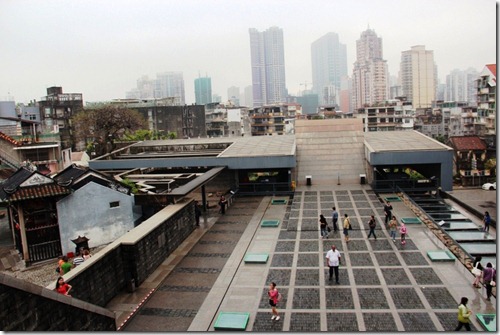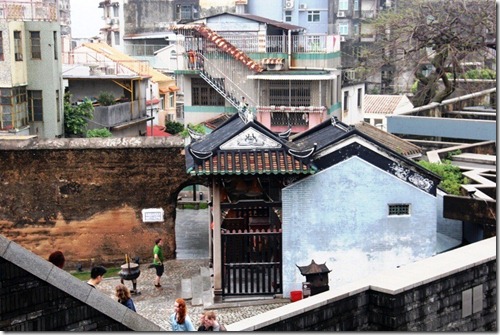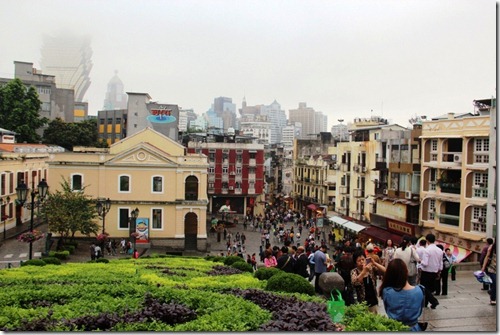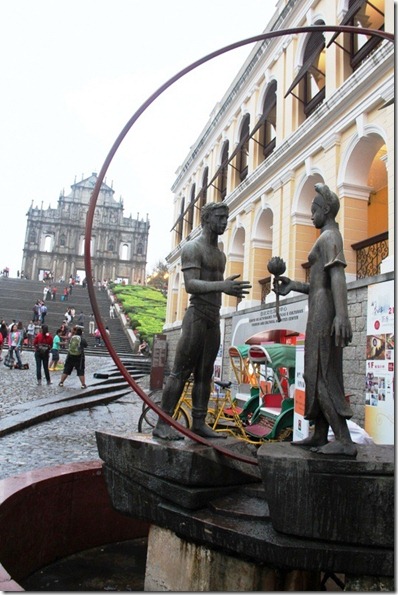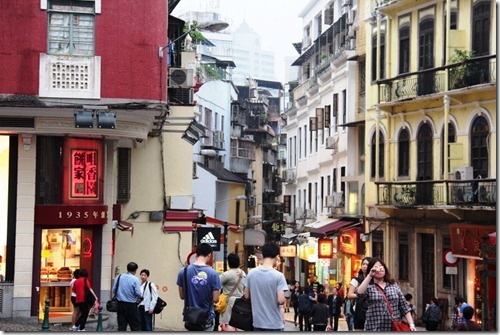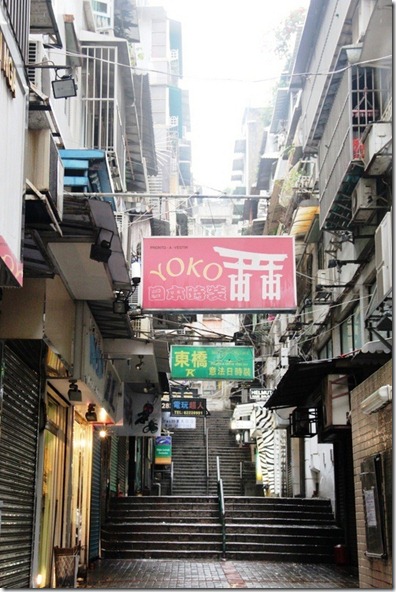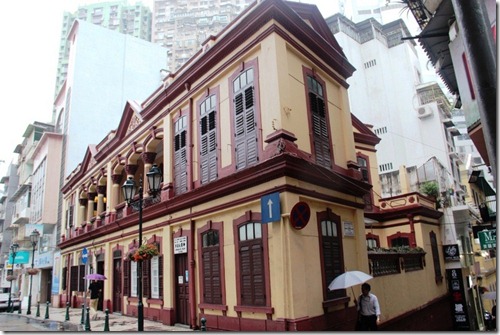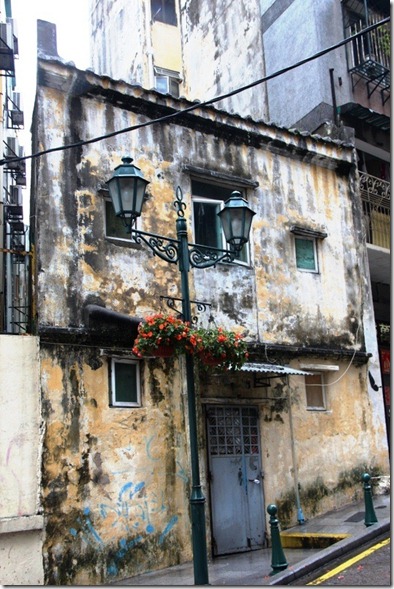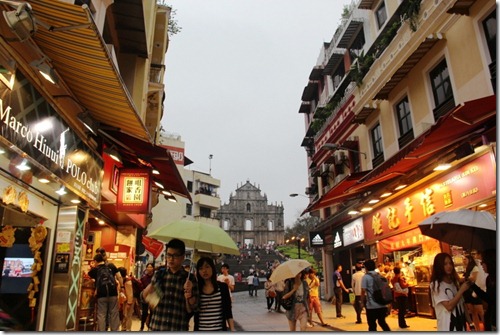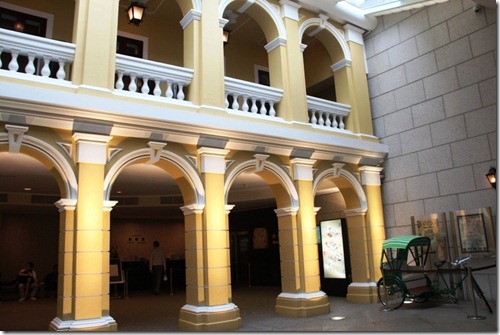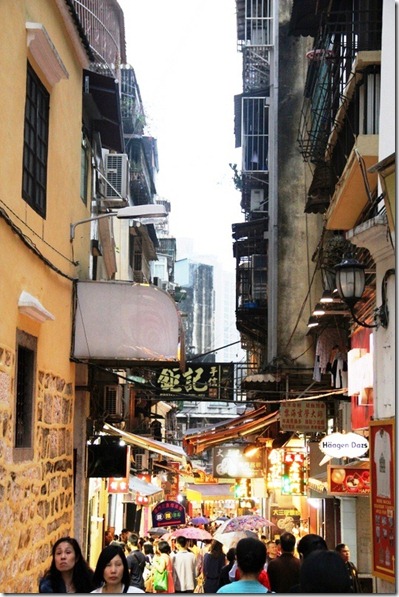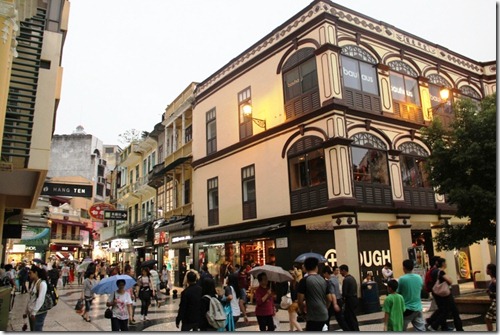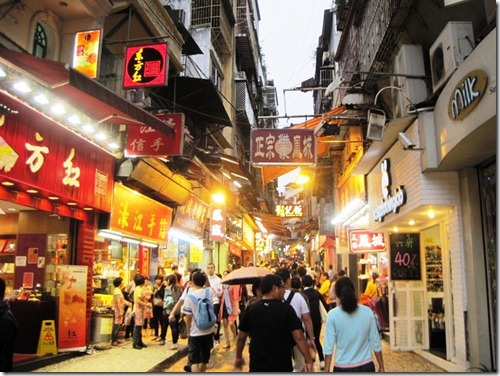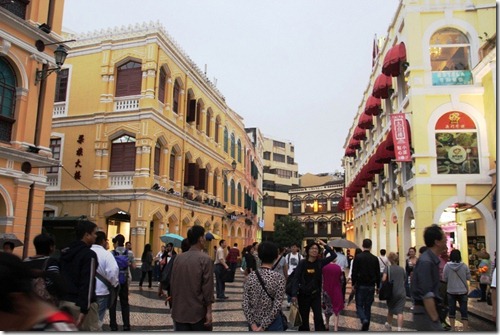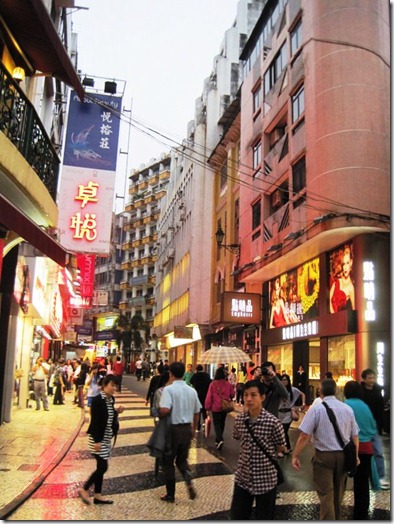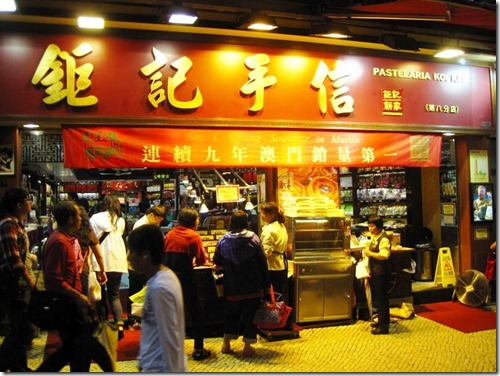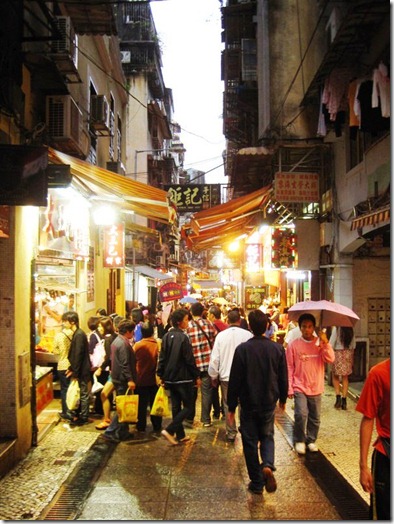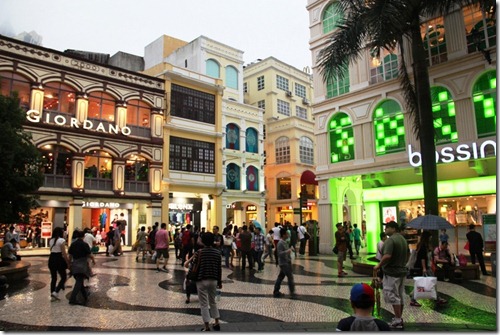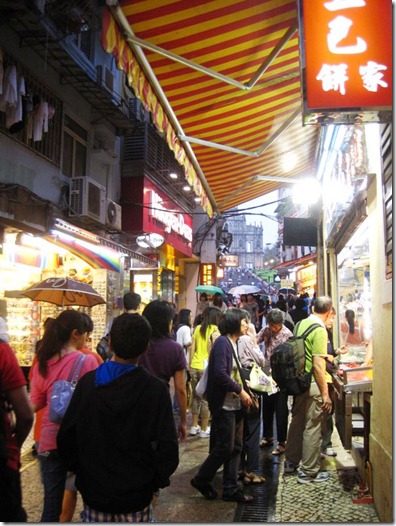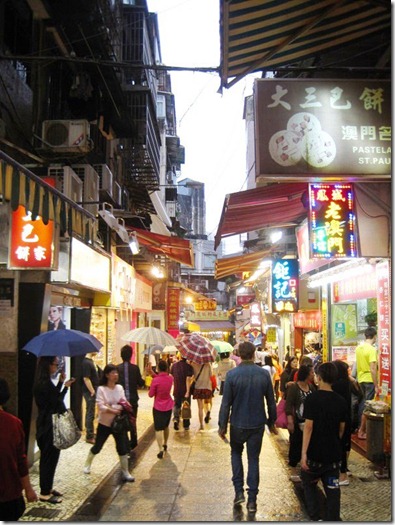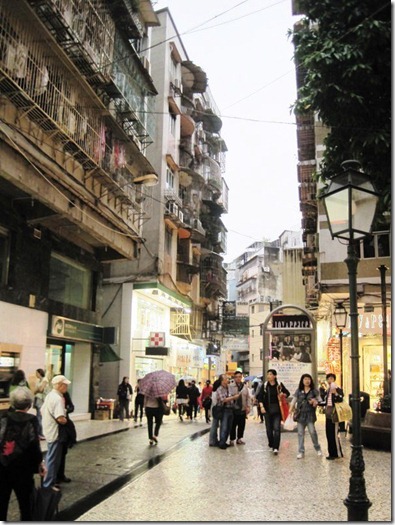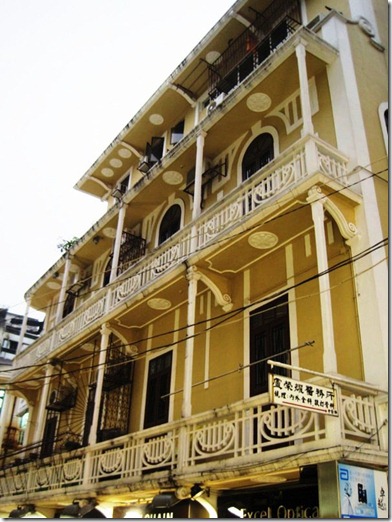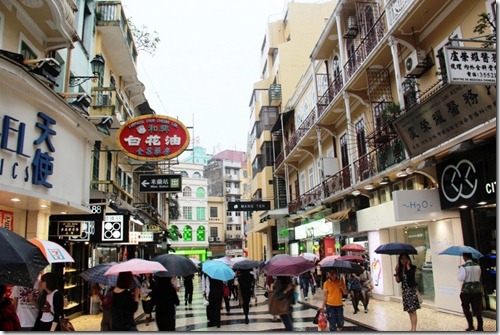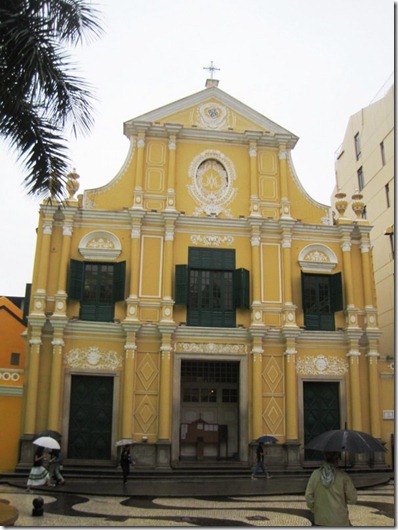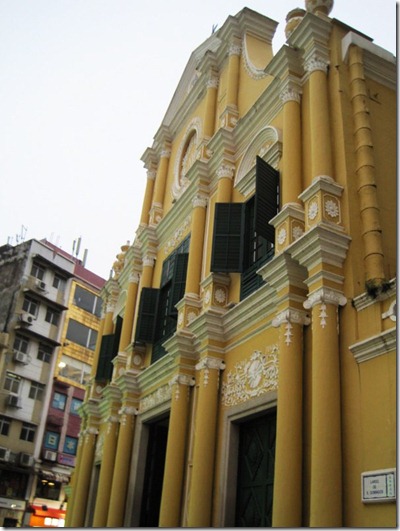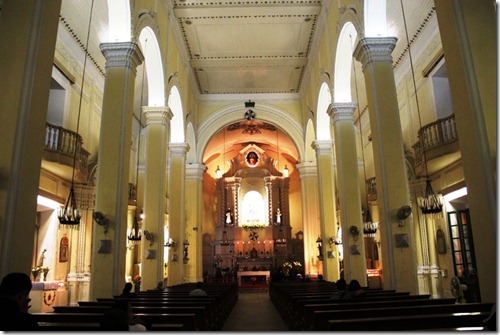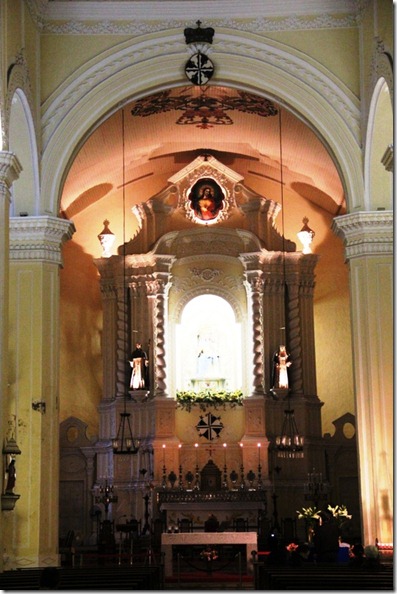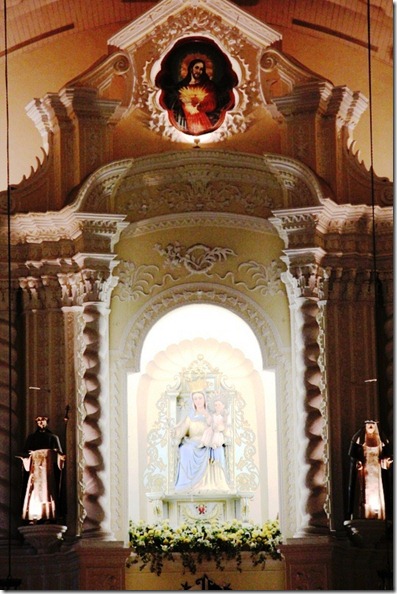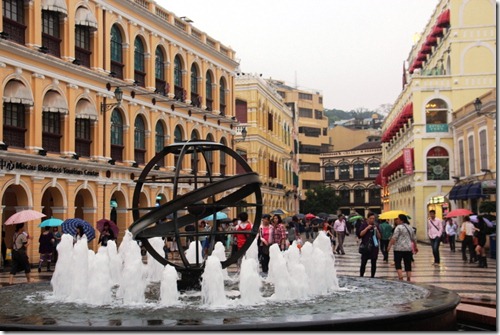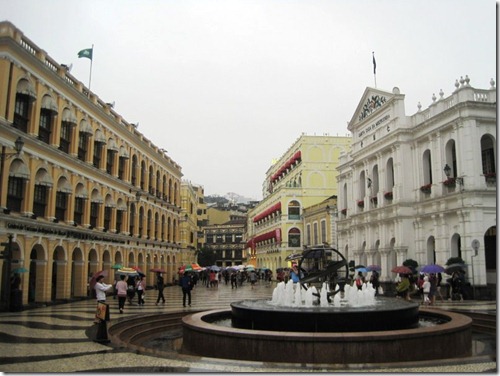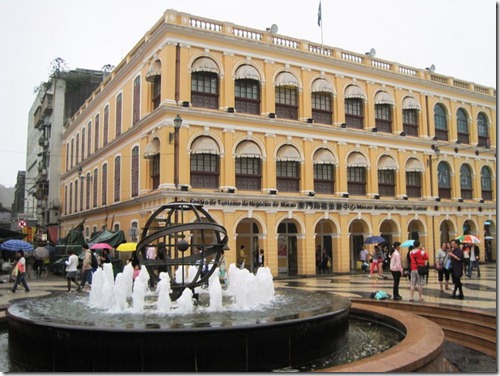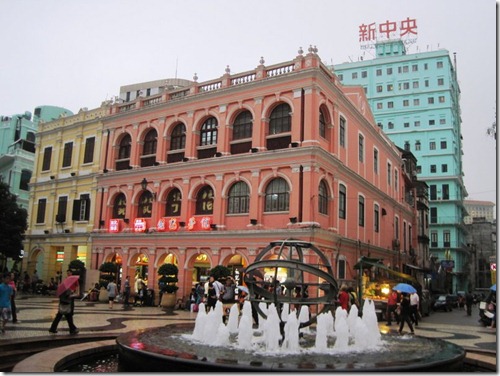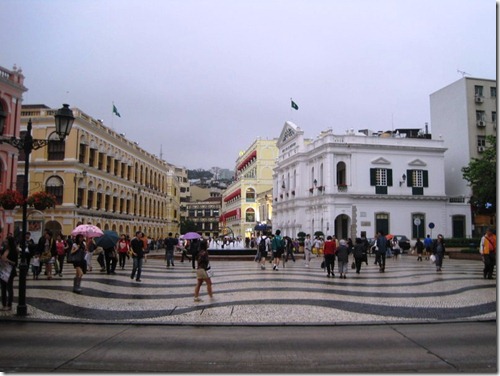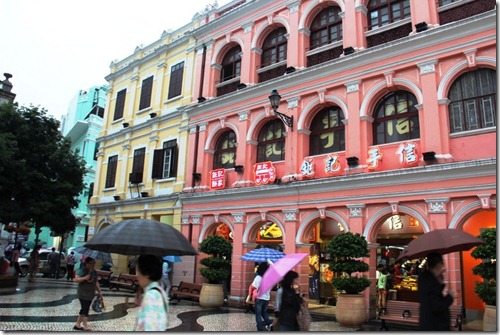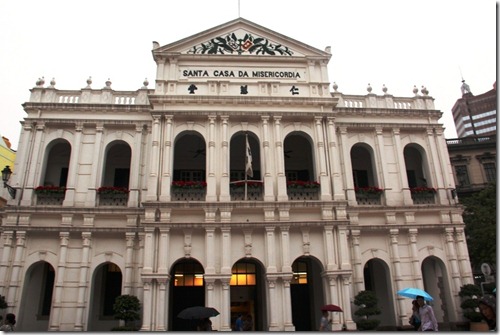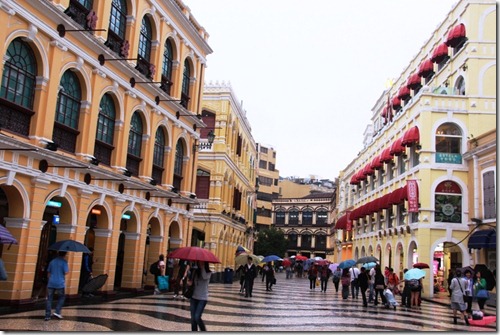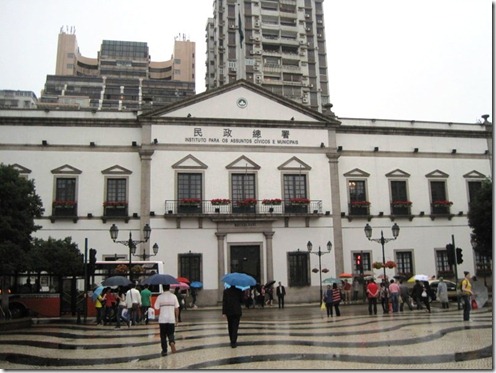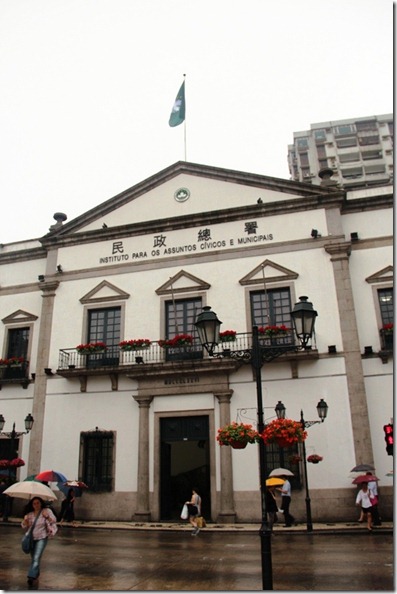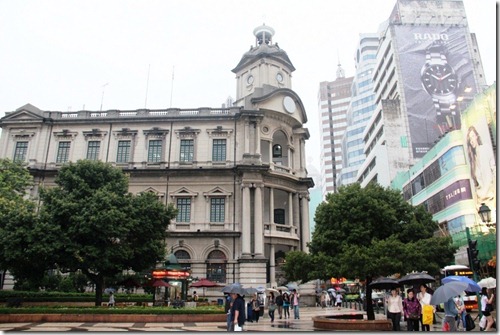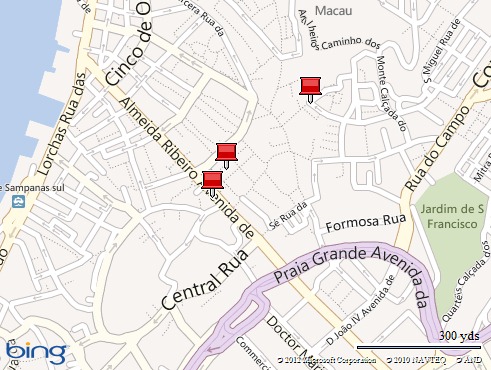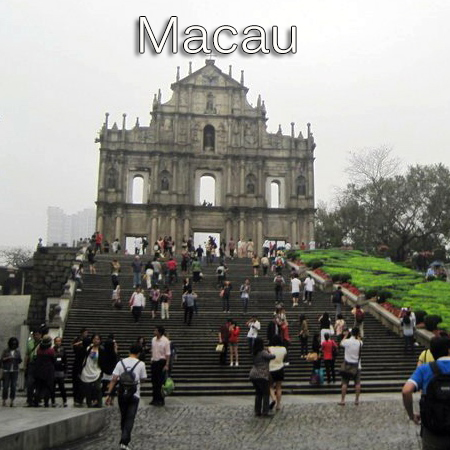The Historic Center of Macau
This is the second in a series of articles about Macau, a Special Administrative Region of the People’s Republic of China. As with the show The House of Dancing Water, we took too many great photos of the Historic Centre of Macao (the Portuguese spelling of Macau) to include all of them in my upcoming list of the Top Ten Things to Savor in Macau. It merits its own post with a full photo collage.
The colonial area of the city with its mix of Portuguese and Chinese influences was designated a World Heritage Site by UNESCO in 2005. According to UNESCO, “with its historic street, residential, religious and public Portuguese and Chinese buildings, the Historic Centre of Macao provides a unique testimony to the meeting of aesthetic, cultural, architectural and technological influences from East and West.”
The Centre stretches over several square kilometers in two zones: one between Barra Hill to the west and Mount Hill in the center, and the other to the east encompassing the Guia Fortress, Guia Chapel, and Guia Lighthouse. The first zone boasts 20 monuments of special significance to the blending of eastern and western influences harkening back to Macau’s days as a Portuguese colony. A complete list is at the end of this article.
During our trip to Macau in April 2012, we visited the monuments near Mount Hill. They’re shown in the map above. Starting at Senado Square (10 on the map), we walked to Mount Fortress (21), the Ruins of St. Paul’s (29), and back to the square. The small area was packed with things to see and made a great daytime walking tour. Unfortunately, time and weather did not permit us to see the other sites in the Centre — perhaps during a future visit.
We started at the Mount Fortress (Fortaleza do Monte in Portuguese). The hilltop fortress was built in 1626 by the Jesuits to defend themselves from attack. The colonial government seized it after Pope Clement XIV dissolved the Jesuits’ Order, the Society of Jesus, in 1773, and the Jesuits departed. It served for many years as the residence of the governors of Macau and a military fort. It is now home to the Museum of Macau. You can almost hear echoes of the city’s colonial past near the cannons on the ramparts. The beautiful garden offers panoramic views of the old city.
The Museum of Macau.
A short escalator ride down the hill is the Ruins of St. Paul’s Cathedral and College, one of the city’s most famous landmarks. Completed in 1602 by the Jesuits, it was one of the largest Catholic complexes in Asia but fell into decline after the Jesuits’ departure. It was destroyed by a fire during a typhoon in 1835. The cathedral’s façade crowning a long flight of stone steps was the only visible remnant of the church. Its baroque features reminded me of the Jesuit Reductions in South America that were built at about the same time.
Statue depicting the Apostle Paul.
The back side of the cathedral’s façade — an interesting contrast from the front.
Next to the Ruins of St. Paul’s is the nondescript Na Tcha Temple, a Buddhist and Taoist temple built in 1888 to honor the Taoist deity of protection, Na Tcha. Perhaps just as significant is the red-brown wall behind the temple that’s reportedly one of the last standing sections of the Old Wall of Macau destroyed by the Chinese in 1622.
Na Tcha Temple and a section of the old Macau wall.
We walked down the steps of the Ruins of St. Paul’s to the intersection of Rua de Sao Paulo and Rua de Santo Antonio, where the shopping district of the Historic Centre of Macao began. Heading away from St. Paul’s, Rua de Santo Antonio became a cobblestone pedestrian street that headed to Senado Square.
At the base of the steps was an interesting statue depicting a Caucasian man and Asian woman that apparently signified the union of eastern and western influences in Macau. In an eternal pose the woman offers the man a lotus flower, and the man accepts with an open hand.
As we made our way through the Centre’s shopping district, we saw a variety of western and Asian storefronts sprouting from colorful Portuguese-style colonial buildings with signs in Chinese, English, and Portuguese. It was an interesting melding of the old and new. Most tourists here were Chinese drawn by the excellent shopping opportunities.
A side street off Rua de Santo Antonio.
An old home.
Colonial building near Rua de Santo Antonio.
Near the junction of Rua de Santo Antonio and Rua Sao Domingos, we passed by the beautiful St. Dominic’s Church. Originally built in 1587, the baroque interior is worth a look-see.
Turning a corner, we entered Senado Square, or Senate Square, the heart of historic Macau. The square was paved with a colorful mosaic of cobblestones surrounding a contemporary fountain bedecked with a metallic globe. The Leal Senado, General Post Office, the Santa Casa de Misercordia (Holy House of Mercy), a Portuguese charity, and other colonial buildings bordered the square.
The Leal Senado (Loyal Senate) erected in 1784 was the seat of Macau’s colonial government. Its name, bestowed in 1810, honors the colony’s continued loyalty to the Portuguese monarchy during the Iberian Union (1580-1640). It has served as the headquarters of the Institute of Civic & Municipal Affairs, which administers local matters, since Macau’s transfer of sovereignty to China in 1999.
The General Post Office.
The monuments described above are only some of the significant ones in the Historic Centre of Macao. Others include:
- A-Ma Temple
- Moorish Barracks
- Lilau Square
- Mandarin’s House
- St Lawrence’s Church
- St. Joseph’s Seminary and Church
- St. Augustine’s Square
- Dom Pedro V Theatre
- Sir Robert Ho Tung Library
- St. Augustine’s Church
- Sam Kai Vui Kun (Kuan Tai Temple)
- Cathedral of the Nativity of Our Lady
- Lou Kau Mansion
- St. Anthony’s Church
- Casa Garden
- Old Protestant Cemetery and the old headquarters of the British East Indies Company
The walking tour from Mount Fortress to Senado Square is accessible by foot and takes about half a day. If you’re planning a trip to Macau, take your time and set aside at least two days to visit the Historic Centre.
[table]
[/table]

